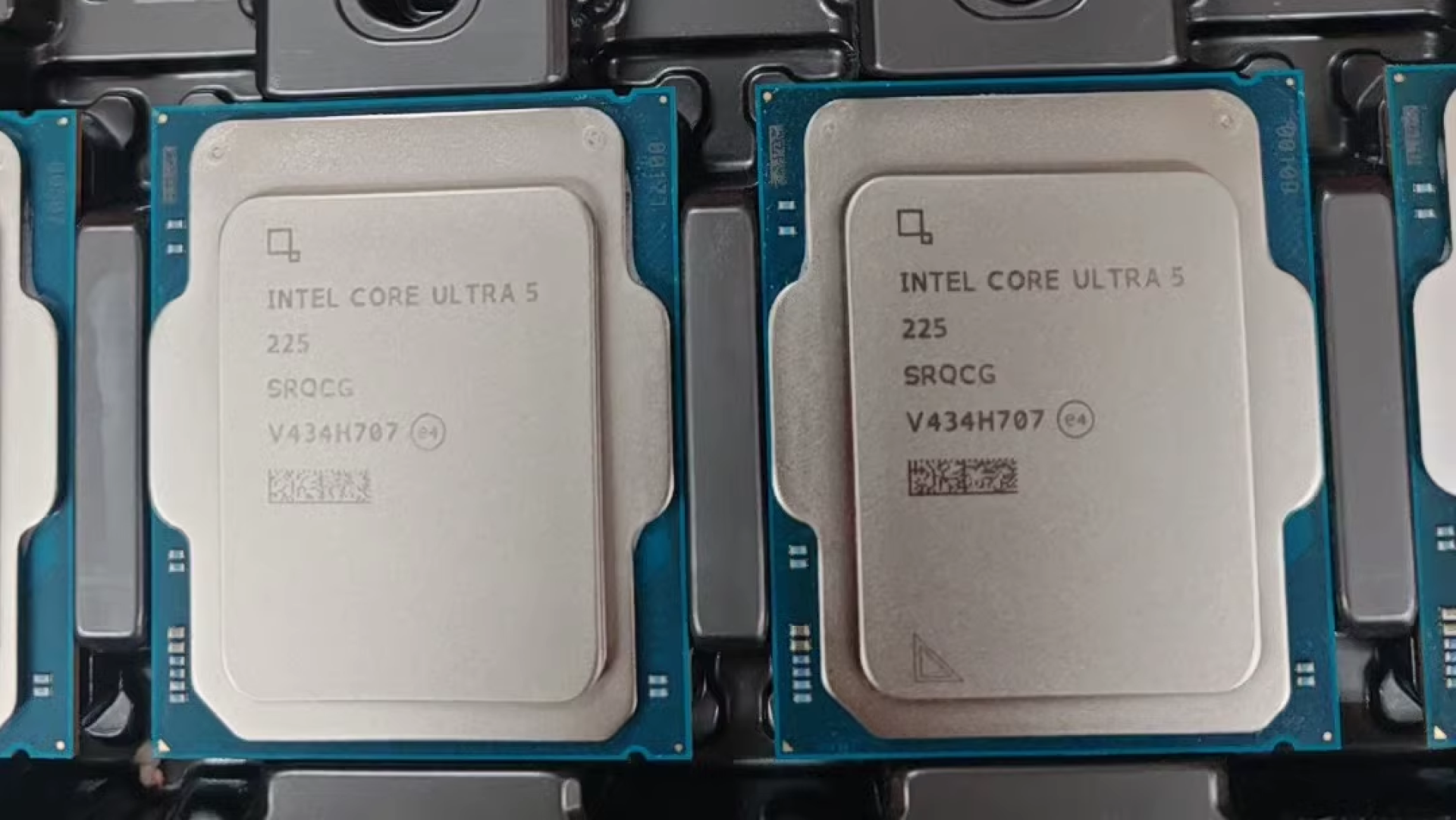Intel's budget Core Ultra 200 series chips have smaller heat spreaders than higher-end models

The first images of Intel’s incoming budget Arrow Lake CPUs have leaked, and surprisingly, they sport an integrated heat spreader (IHS) smaller than the one used for other Core Ultra 200 Series chips (via @harukaze5719 on X).
The pictures come from the Chinese e-commerce site Taobao, where a merchant has listed the Core Ultra 5 245 and Core Ultra 5 225 for sale before Intel officially launches them. The same merchant is also selling the Core Ultra 7 265 and Core Ultra 9 285. At least in China, the launch of new Core Ultra 200 models is close at hand, and that’s made clear not only because listings are cropping up on Taobao but also since Intel’s China branch has already opened up preorders for many non-K Core Ultra 5 and 7 SKUs.
The Taobao listings wouldn’t be particularly interesting if it weren’t because the IHS used for the 245 and 225 is noticeably smaller than the one used for the 285, 265, and the unlocked CPUs that Intel launched in October. Specifically, the elevated portion of the smaller IHS, which is the part that makes contact with the CPU cooler, has been slightly shrunk, especially at the top of the chip. The rim, which goes under the CPU bracket on the motherboard, has gotten bigger, and it seems that the overall surface area of the smaller IHS is about the same as that of the original IHS.
Changing the IHS like this would potentially affect how these CPUs slot into LGA 1851 motherboards. While the 245 and 225 are compatible with the LGA 1851 socket, the retention bracket around the socket was designed to also fit the original IHS. For now, we can only guess as to whether the smaller IHS will pose any fitment issues.
Additionally, the code printed on the IHS of the 245 and 225 starts with a V rather than an L, which is observed on models that use the original IHS, including the unreleased 285 and 265. These codes contain details for where and when Intel CPUs are manufactured, either for the step of the process when the CPU die is fabricated or when the CPU is fully packaged or assembled.
While codes starting with L indicate Ireland as the country of origin, V means Vietnam. It seems that Core Ultra 200 CPUs with the original, larger IHS are made in Ireland, and chips using the smaller variant (which seem to only be the 245 and 225 for now) are made in Vietnam.
The Taobao listings also came with CPU-Z screenshots, and assuming they’re accurate, they show that the 245 and 225 have the same family, model, and stepping identification as the 285.
Get Tom's Hardware's best news and in-depth reviews, straight to your inbox.
Intel has traditionally used a mix of larger and smaller dies, and even architectures, for its Core 5 series, while Core 3 uses a smaller die and a previous-gen architecture. The smaller IHS could indicate the company has decided to use a smaller heatspreader for models with a smaller die. We've pinged Intel to see if the company will share further details.
We won’t know the official reasons behind the different IHS until these CPUs officially debut, which is anticipated to happen at CES 2025 next week at Intel’s presentation at the conference.

Matthew Connatser is a freelancing writer for Tom's Hardware US. He writes articles about CPUs, GPUs, SSDs, and computers in general.
-
hotaru251 ....to what? save a a dollar of material cost? while spending god knows how much on machinery to make it smaller :|Reply -
Notton My guess, the smaller IHS provides a better contact patch over the hot spots.Reply
If anyone remembers how the Intel IHS for 12-14th gen was utterly garbage. It warped in the socket due to the retention mechanism, and even if you modified the retention mechanism it still had a slight concave patch over the hot spot and resulted in poor contact with a heatsink.
Noctua even went as far as offering an Intel specific convex contact plate.